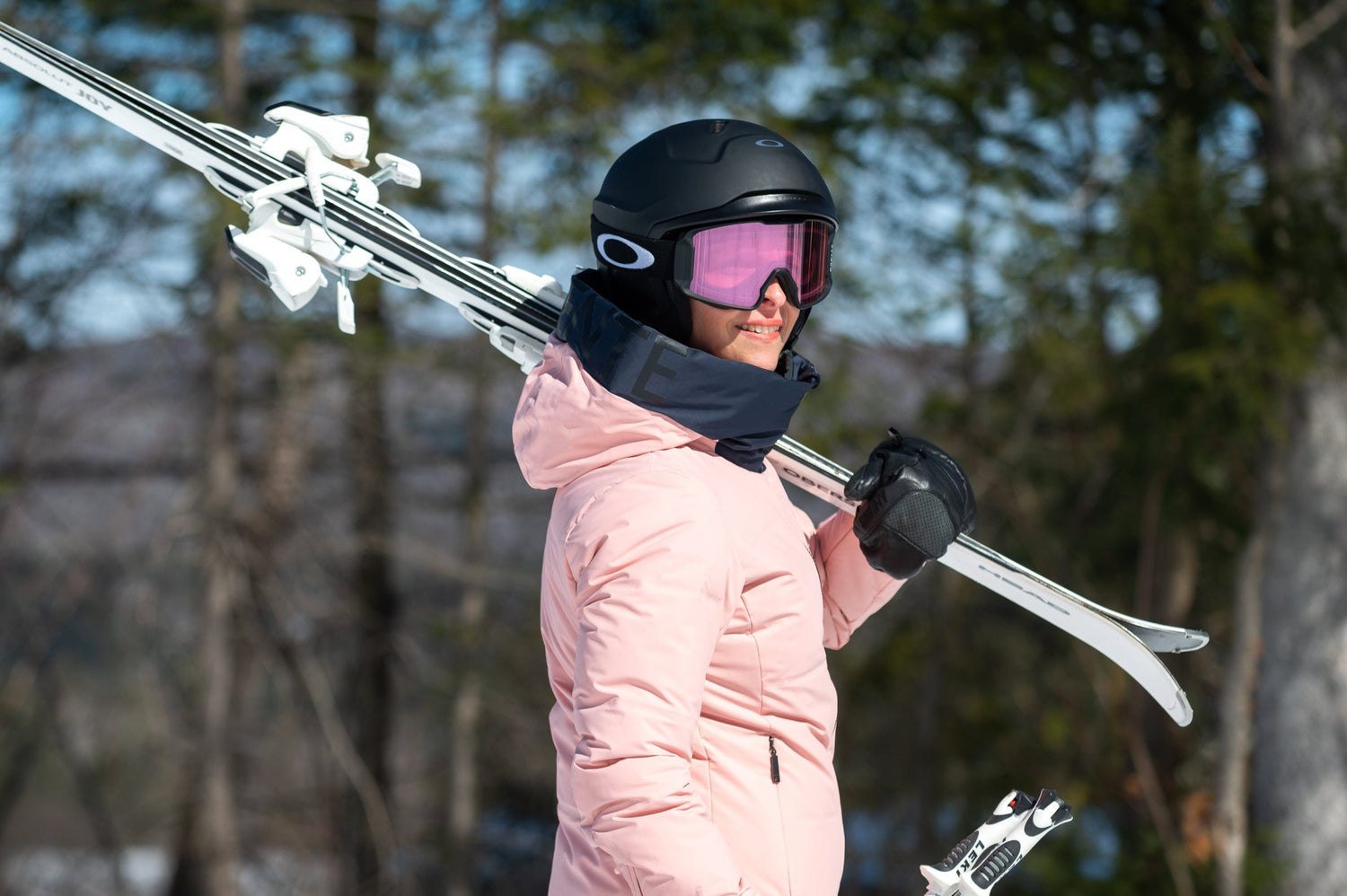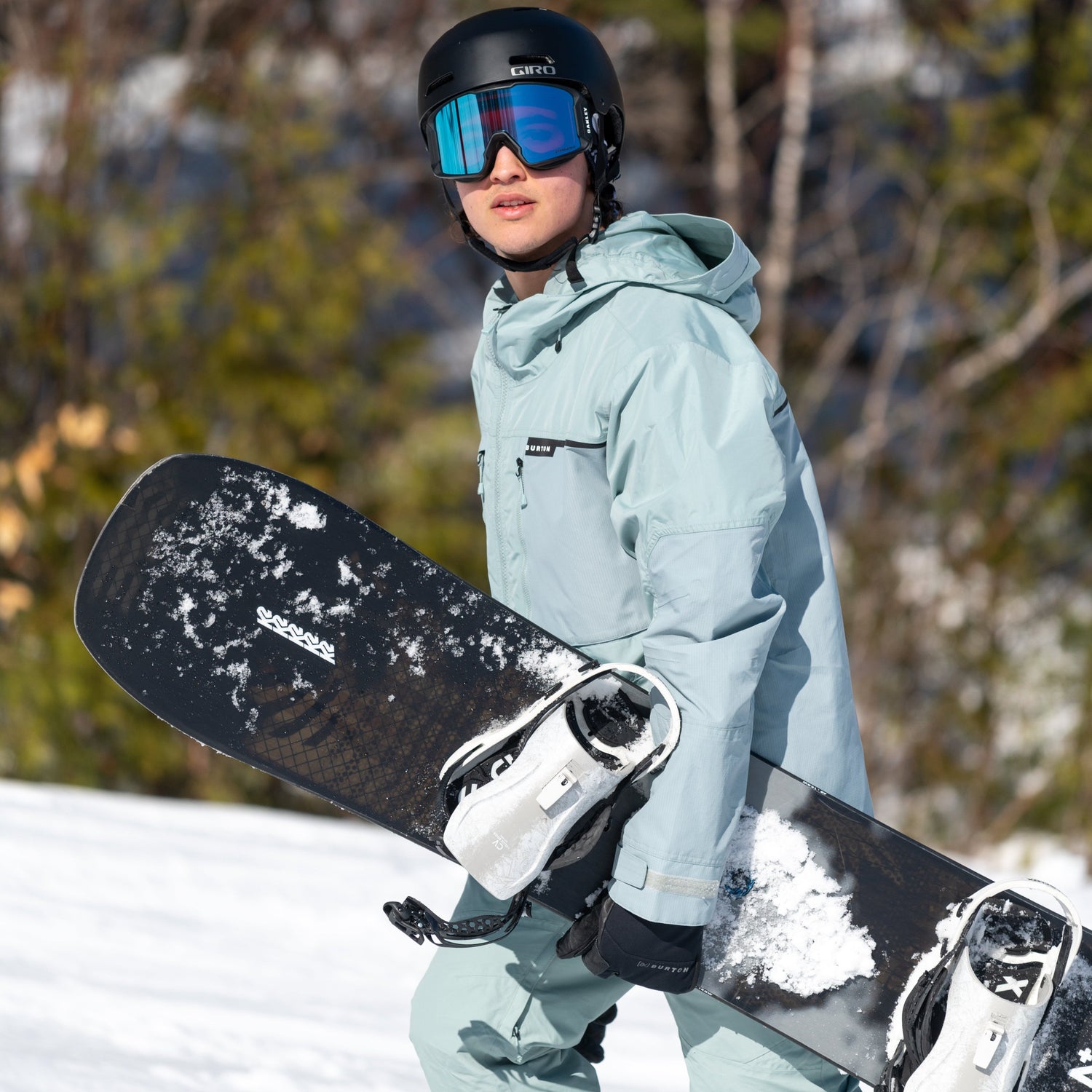1. Determine the Best Kids’ Ski Jacket for Your Child’s Activities
A season of alpine skiing can evolve depending on skill level, age and time spent on the slopes. That’s why it’s important to think about certain aspects that will define your child’s needs for winter clothes.
How many times a week will he or she go downhill skiing?
Will the jacket be his or her only winter coat?
Does the child tend to get cold easily?
How much does he or she sweat?
Does your child ski from the start of the season through spring skiing?
What is his or her skill level? (Does your child ski aggressively or slowly?)

2. Choose the Right Type of Kids’ Ski Jacket
There are different styles of ski jackets for boys and girls. Fits and technologies are usually similar from one kind to another. It’s more a question of colour preference than fit.
Children’s ski jacket types come in the same product categories as for adults.
-
Two-piece snowsuit: As you’d guess, this setup includes a winter jacket and snow pants.
-
One-piece snowsuit: This one-piece outfit is ideal for toddlers. It does a great job trapping body heat because there is no jacket for air to slip under. One-piece snowsuits for children are easy to put on, and since they’re a two-in-one, they’re the one and only item you’ll need to buy.

-
Insulated winter coats: Insulated winter coats are very popular. They trap body heat well. Plus you can add a fleece layer underneath in colder weather. Insulated ski jackets can be designed with synthetic insulation or down. They are also an excellent value.
-
Shell jackets: Kids’ shell jackets are designed to be worn with multiple layers. So it’s important to buy good base layers and one or more good mid layers. Shells have the advantage of also being used as a raincoat. Plus, if you introduce your youngsters to touring, dressing in layers is the best option for the high-intensity sport.
-
Three-in-one ski jackets: The advantage of the three-in-one option is that it offers a waterproof jacket and an insulating layer that can be worn together or separately depending on the weather and activity.
Are you intrigued by the multi-layer system? Check out Building a Multi-Layer System for Touring.

3. Choose the Right Insulation for Their Ski Jacket
-
Kids’ ski jacket insulated with down: Down is a natural insulating fibre usually composed of a mixture of goose feathers and down. This material is the insulation that best retains heat on the market. It provides an excellent heat-to-weight ratio and is highly compressible. However, it’s not very breathable, which can be an inconvenience for children who sweat a lot. That said, a good base layer can help a bit. Another disadvantage is that down is somewhat more expensive.
-
Kids’ ski coat insulated with synthetic materials: Synthetic insulation is the one that best wicks moisture. They also hold in body heat well and are lightweight. There are many synthetic insulators. You probably already know Primaloft and 3M Thinsulate. Different clothing brands also often use their own synthetic materials. Clothing insulated with synthetic materials is an outstanding value.

4. Find the Right Size
Find the right size for your child so that he or she is comfortable. When trying on items, encourage your youngster to move around to make sure there’s enough room in them to do so. In addition, your child should be able to wear a mid layer, such as a kids’ fleece jacket.
You should also make sure he or she can easily put it on by him- or herself (of course depending on the child’s age). Check the adjustments on the sleeves so that mittens are easy to put on with the jacket.
Sleeve Extension Technology
It’s the most wonderful technology for kids’ winter clothes. This design technology—which goes by different names depending on the company—lets you extend the sleeves of the ski jacket by one to two inches. The same goes for winter pants. The advantage is that the jacket will be able to accommodate growth spurts during the season and in winters to come.

5. Check the Ski Jacket’s Waterproofness
Waterproof protection is crucial for winter jackets. The waterproofness of a ski jacket’s membrane is its fabric’s ability to prevent water from penetrating it. A fabric’s waterproofness is defined by the Schmerber unit of measurement and is calculated based on the water column test.
The unit of measure is one millimetre of water. A children’s ski jacket that has a waterproofness of 10,000 mm resists this amount of water before liquid penetrates the membrane.
A winter coat with a waterproof capacity of 10,000 mm is very effective. A snowsuit at 20,000 mm and above is considered to be very high performing.

6. Determine the Features That are Important to Your Child
- Hood compatible with a ski helmet
- Powder skirt
- Sleeve adjustments
- Compatibility with ski pants (system to attach them to each other)
- Identification tag for the child’s name
- Number of zippered pockets
- Slots at the armpits for ventilation (aka, pit zips)
- Wrist gaiters
- Fit
To complete the ski jacket, don’t forget to find the right accessories, such as mittens, caps and neck warmers. Also keep in mind that taking care of your child’s winter clothes will make them last longer. Read the labels carefully and give them a spin in the washing machine. Grangers Products are excellent choices for insulated, waterproof, breathable winter clothing.



